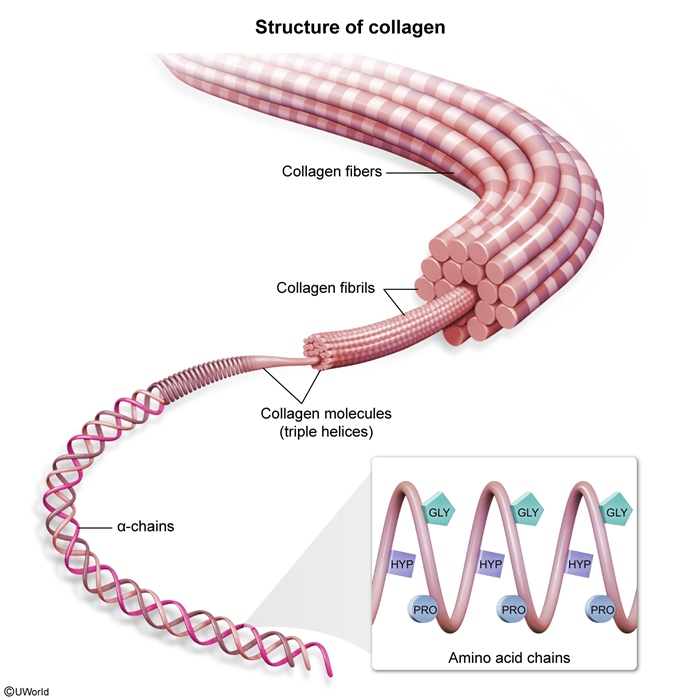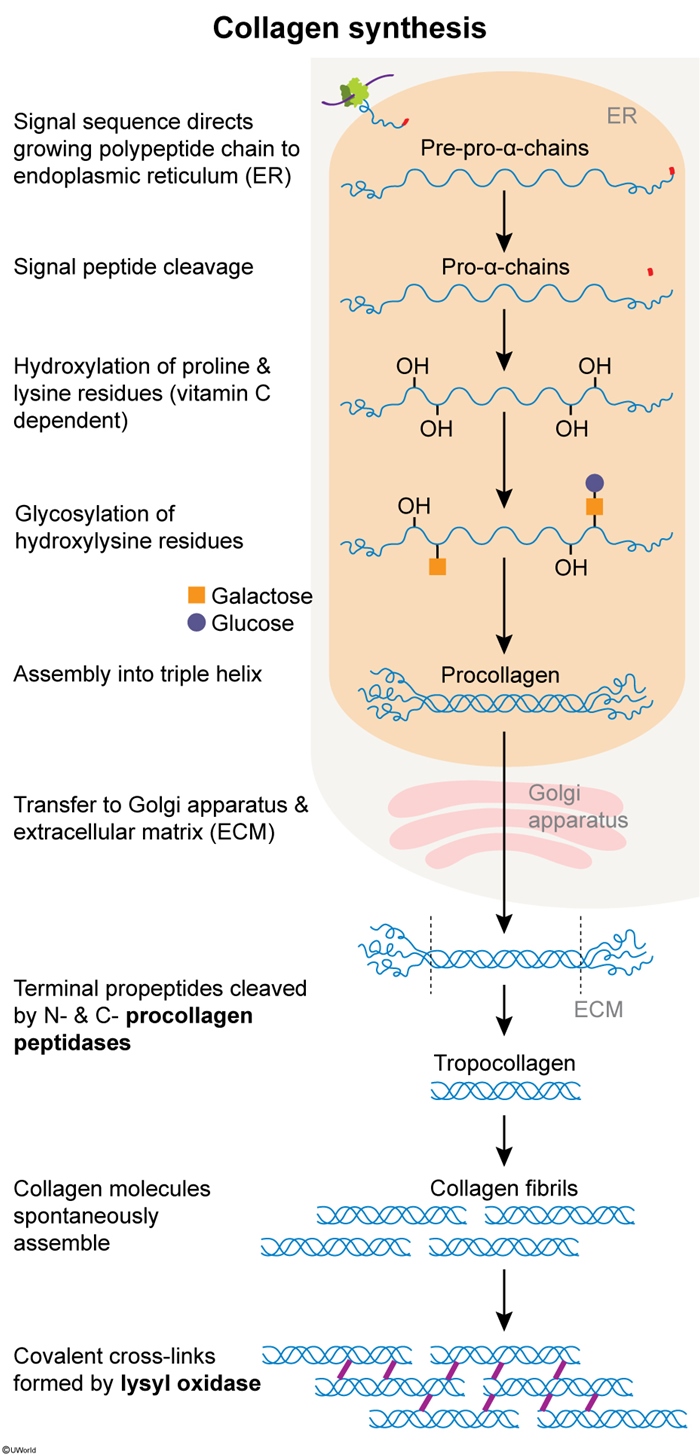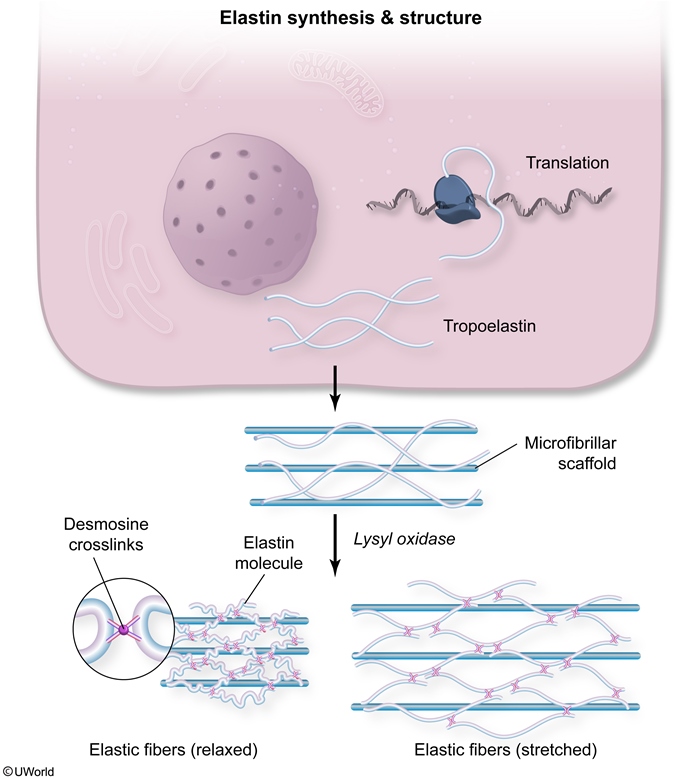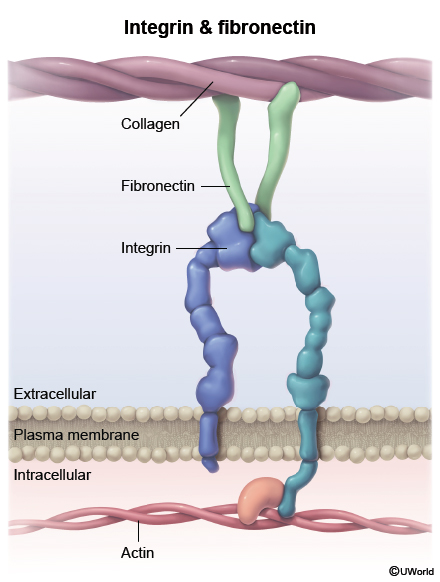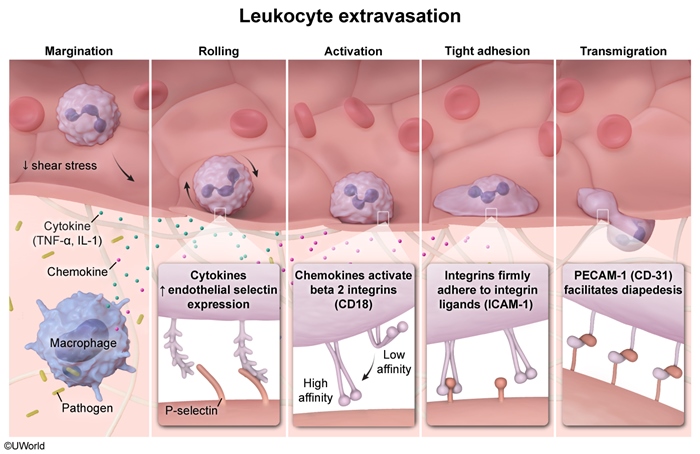Extracellular Matrix And Connective Tissue
Article Sections
Introduction
The extracellular matrix (ECM) is a complex structural network that supports cellular architecture and function. It consists of structural proteins (collagens and elastin), adhesive glycoproteins (integrins), and ground substance (glycosaminoglycans and proteoglycans), which together form the framework for connective tissues. Variations in the composition and organization of ECM elements lead to different connective tissue types with specialized properties.
ECM structural proteins
Structural proteins are also called fibrous proteins. The main structural proteins are collagen and elastin.
CollagensCollagen is a fibrous protein with a triple helix structure consisting of 3 polypeptide alpha chains braided together (Figure 1). Each alpha chain is comprised of ~1,000 amino acids and features a repeating sequence with a primary structure of [Gly-X-Y]n where X is often proline and Y is often hydroxyproline. Glycine, the smallest amino acid, is found at every third residue, allowing for a tight turning radius. Synthesis of collagen is a multistep
Continue Learning with UWorld
Get the full Extracellular Matrix And Connective Tissue article plus rich visuals, real-world cases, and in-depth insights from medical experts, all available through the UWorld Medical Library.
Figures
